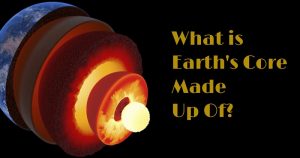
What Is Earth’s Core Made Up Of? Scientists Discovered The Last Missing Element
Scientists from Japan finally came up with some precise analytics regarding the Earth’s core. Earlier, it is believed that about 85 percent of the Earth’s core is made up of iron while nickel accounts for additional 10%. However, the remaining 5% was a mystery.
Now, researchers have probably figured out what is the final element hiding inside the Earth. They believe that the remaining 5 percent is likely made up of silicon.
“We believe that silicon is a major element – about 5% (of the Earth’s inner core) by weight could be silicon dissolved into the iron-nickel alloys.” Lead researcher Eiji Ohtani from Tohoku University told BBC News.
Earth’s core lies about 3,000 kilometres below the surface. Moreover, it exists under very extreme conditions, both very high temperatures and very intense pressures. That virtually makes it impossible for researchers to reach Earth’ core and to extract samples from there. Therefore, researchers were never able to find precisely what the core is made of.
The researchers created computer models of Earth by mixing different materials and recreating temperatures and pressures found deep inside its interior in order to investigate which element exists in Earth’ core. Experiments suggest that the missing element is most likely silicon, mainly because it is a lighter element and can bond well with other metals. The results also matched the real Earth’s core by seen as seismic data.
The clear understanding the compositional properties of the interior could help researchers better understand the formation of Earth.
Professor Simon Redfern from the University of Cambridge, who was involved in the study said: “These difficult experiments are really exciting because they can provide a window into what Earth’s interior was like soon after it first formed, 4.5 billion years ago, when the core first started to separate from the rocky parts of the Earth.”
The new effort also suggests that oxygen is likely not abundant in Earth’ core, which contradicts the findings of other similar studies.